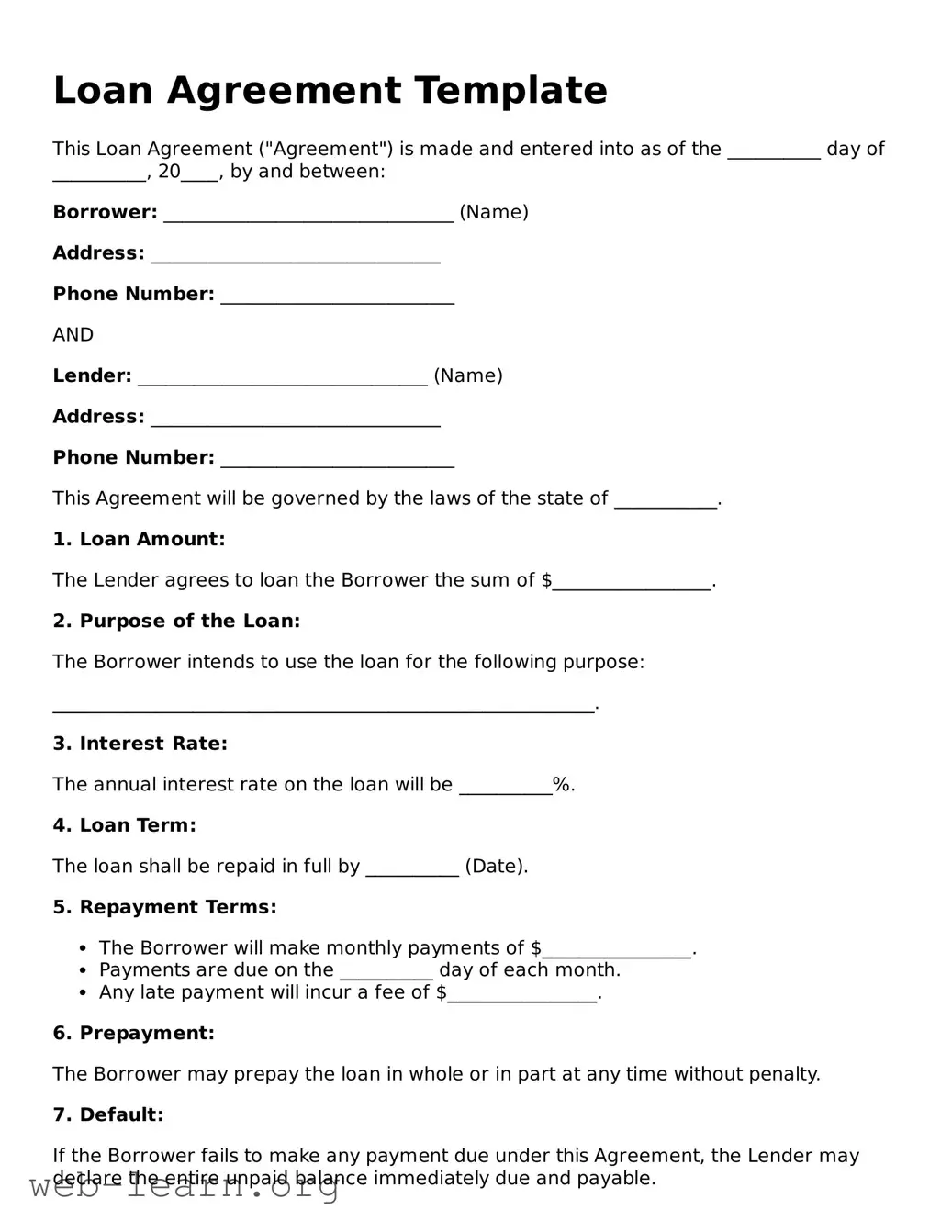Loan Agreement Template
This Loan Agreement ("Agreement") is made and entered into as of the __________ day of __________, 20____, by and between:
Borrower: _______________________________ (Name)
Address: _______________________________
Phone Number: _________________________
AND
Lender: _______________________________ (Name)
Address: _______________________________
Phone Number: _________________________
This Agreement will be governed by the laws of the state of ___________.
1. Loan Amount:
The Lender agrees to loan the Borrower the sum of $_________________.
2. Purpose of the Loan:
The Borrower intends to use the loan for the following purpose:
__________________________________________________________.
3. Interest Rate:
The annual interest rate on the loan will be __________%.
4. Loan Term:
The loan shall be repaid in full by __________ (Date).
5. Repayment Terms:
- The Borrower will make monthly payments of $________________.
- Payments are due on the __________ day of each month.
- Any late payment will incur a fee of $________________.
6. Prepayment:
The Borrower may prepay the loan in whole or in part at any time without penalty.
7. Default:
If the Borrower fails to make any payment due under this Agreement, the Lender may declare the entire unpaid balance immediately due and payable.
8. Governing Law:
This Agreement shall be governed by the laws of the state of __________.
9. Signatures:
The parties have executed this Loan Agreement as of the date first above written.
Borrower Signature: _______________________________
Date: __________
Lender Signature: _______________________________
Date: __________
